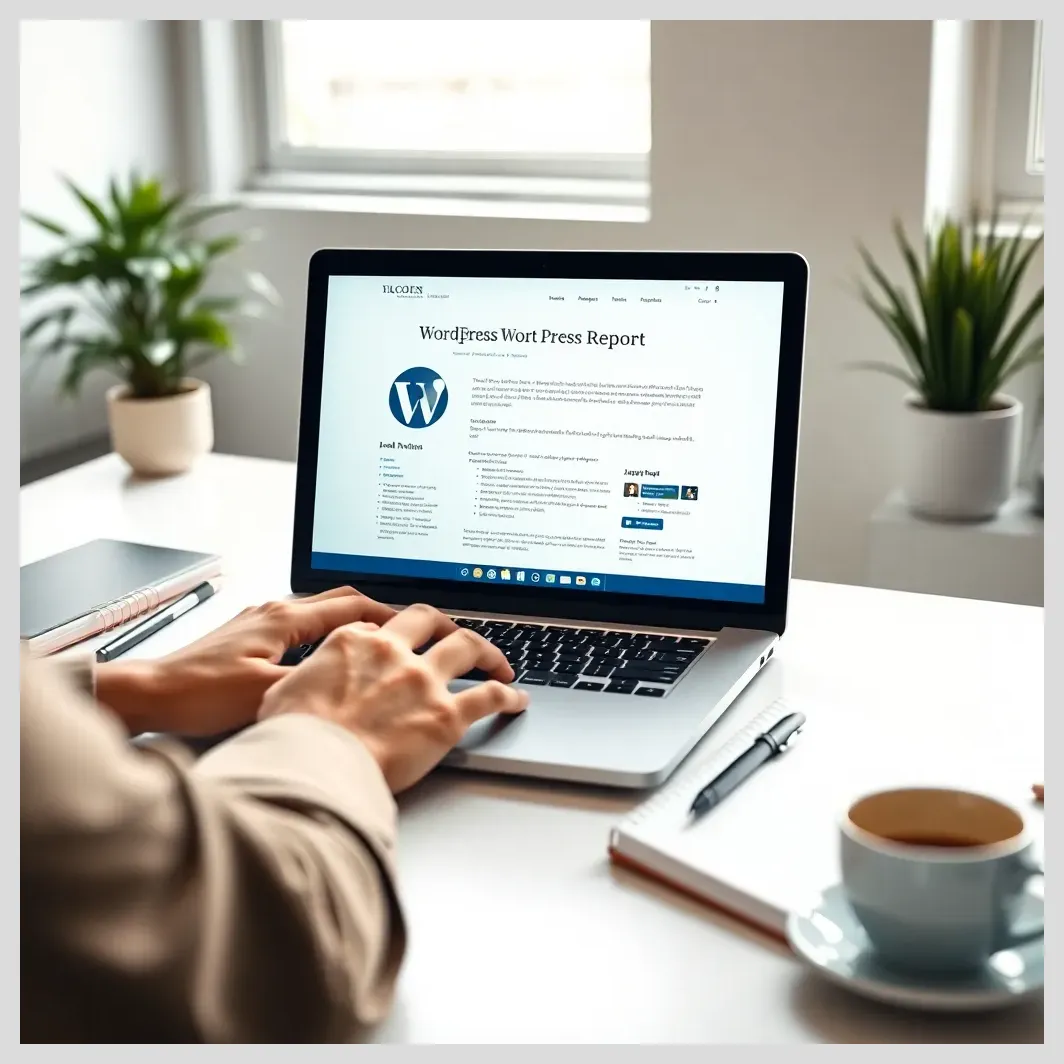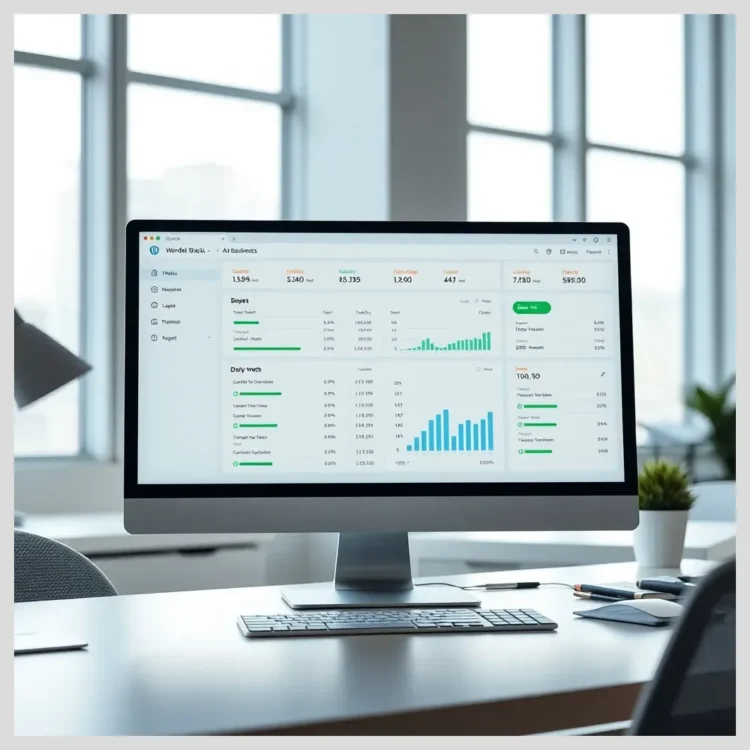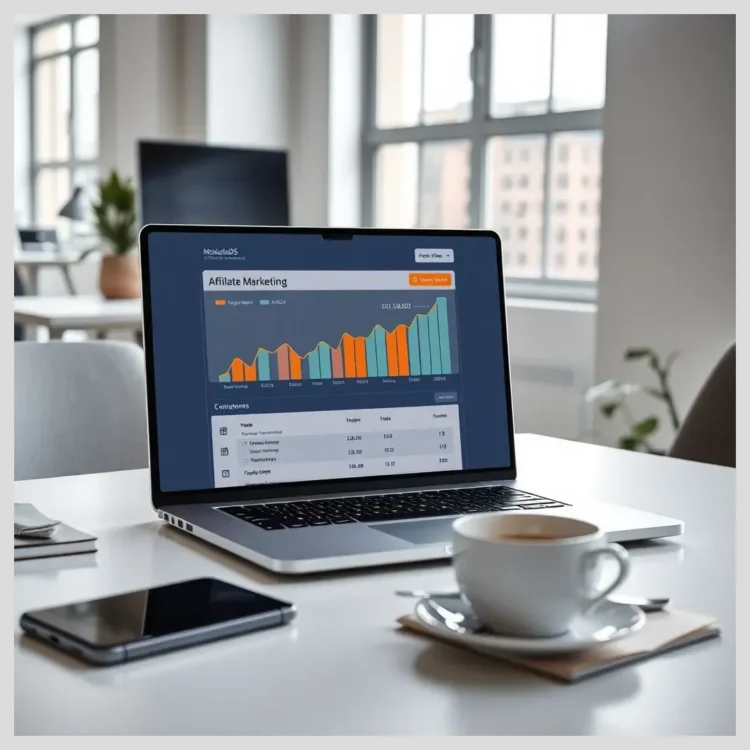In this article:
In this comprehensive guide, we will explore why client-friendly WordPress maintenance reports are essential, what clients expect from them, and how to create reports that build trust and demonstrate your service value. We will cover the key elements to include, step-by-step instructions, the best tools available—including a detailed comparison featuring Modular DS—and practical tips to overcome common challenges.
Key points covered in this article include
- Understanding the role and importance of maintenance reports in website upkeep
- Characteristics that make reports user-friendly and client-oriented
- Essential components to include in WordPress maintenance reports
- Step-by-step process to create clear and professional reports
- Overview and comparison of top reporting tools, highlighting Modular DS
- Branding and white-labeling best practices
- Common challenges and solutions in report creation
- Real-world case studies and user feedback
- Future trends in WordPress maintenance reporting
Introduction: Why Creating Client Friendly WordPress Maintenance Reports Matters
When managing WordPress sites for clients, clear communication is key. Client-friendly WordPress maintenance reports serve as a bridge between technical work and client understanding. They help build trust by transparently showing what has been done to keep the website secure, fast, and up-to-date. Without these reports, clients may feel disconnected or unsure about the value of your services.
These reports also improve communication by summarizing complex technical tasks into simple, digestible information. This clarity reduces misunderstandings and supports stronger client relationships. However, many agencies and freelancers struggle with creating reports that are both detailed and easy to understand, often overwhelmed by fragmented data and technical jargon.
This article aims to guide you through the process of creating reliable, efficient, and professional client-oriented WordPress maintenance reports that meet client expectations and enhance your service reputation.
Practical Tips for Creating Client-Friendly WordPress Maintenance Reports
Report Clarity & Client Focus
- Use simple, everyday language avoiding technical jargon.
- Focus on client benefits and actionable insights.
- Keep reports concise but comprehensive enough to cover key updates.
- Use visuals like charts, graphs, and screenshots to illustrate trends.
Report Structure & Content Essentials
- Document plugin, theme, and core WordPress updates with versions.
- Summarize security scans, patches, and firewall status.
- Report backup frequency, success, and restoration tests.
- Include performance metrics, uptime, and content management updates.
Best Practices & Workflow Tips
- Define clear report objectives aligned with client priorities.
- Centralize data collection using integrated tools or plugins.
- Use standardized, branded templates for consistency.
- Automate report generation but always review before sending.
- Deliver reports regularly and follow up with clients for feedback.
Recommended Tools & Automation
- Modular DS: Advanced automation, full white-label, centralized management.
- Glow: Combines support, maintenance, and reporting in one dashboard.
- Logtivity: Centralizes logs with alerts and white-label options.
- WP Client Reports & WpDepend: Affordable options with white-label features.
The Role of Maintenance Reports in Website Upkeep
WordPress maintenance reports are structured summaries that document the ongoing care and updates performed on a website. Their primary purpose is to inform clients about the health and status of their WordPress sites in a way that is accessible and meaningful.
It is important to distinguish between raw technical logs and client-friendly summaries. Technical logs contain detailed backend data useful for developers but often confusing for clients. Client-friendly reports translate this data into clear language, highlighting key activities and outcomes.
Maintenance reports fit into the broader scope of website upkeep and web management by providing accountability and transparency. They demonstrate that the website is actively monitored and maintained, which is critical for security, performance, and SEO.
Typical components of these reports include updates to plugins, themes, and WordPress core; security monitoring results; backup statuses; performance metrics; uptime tracking; and SEO insights. Together, these elements provide a comprehensive picture of website health.
What Clients Really Want: Characteristics of User-Friendly Maintenance Reports
Clients appreciate reports that are clear and simple, avoiding technical jargon that can confuse or intimidate. Using everyday language helps clients feel informed and confident about their website’s status.
Consistency in formatting and branding is crucial. Reports should reflect the agency’s professionalism through clean layouts, use of logos, and consistent color schemes. This builds credibility and reinforces brand identity.
Timeliness matters. Clients expect reports delivered on a regular schedule—monthly or quarterly—to stay updated without feeling overwhelmed.
Reports must strike a balance between comprehensiveness and brevity. They should be detailed enough to cover important updates but concise enough to be quickly understood.
Visual aids such as charts, graphs, and screenshots enhance understanding by illustrating performance trends and issues visually.
Actionable insights and recommendations empower clients to make informed decisions about their website’s future improvements.
Essential Elements to Include in WordPress Maintenance Reports
A well-rounded WordPress maintenance report includes several key areas
- Website Updates Document plugin, theme, and core WordPress updates applied, including version numbers and any notable changes.
- Security Monitoring Summarize malware scans, vulnerability patches, firewall status, and any security incidents addressed.
- Backup Solutions Report on backup frequency, success status, and results of restoration tests to ensure data safety.
- Performance Optimization Include speed test results, caching status, database cleanup activities, and any improvements made.
- Uptime Tracking Provide data on website availability, downtime incidents, and response times.
- Content Management Highlight recent content changes, SEO analysis, and broken link fixes.
- Support Tickets and Resolved Issues Summarize client requests handled and issues resolved during the reporting period.

Create client friendly wordpress maintenance reports
Step-by-Step Guide to Create Client Friendly WordPress Maintenance Reports
Creating effective reports involves several steps
 Creating a Monthly WordPress Maintenance Schedule That Takes 1 Hour
Creating a Monthly WordPress Maintenance Schedule That Takes 1 Hour- Define Report Objectives Align report content with client priorities and expectations.
- Collect and Centralize Data Use plugins and monitoring tools to gather data from all relevant sources.
- Choose or Create a Template Develop a standardized, branded template that ensures consistency.
- Automate Data Collection and Report Generation Leverage automation to save time and reduce errors.
- Review and Proofread Ensure clarity, accuracy, and professionalism before sending.
- Schedule and Deliver Reports Maintain a regular delivery schedule to keep clients informed.
- Follow Up Engage clients to explain reports and gather feedback for continuous improvement.
Tools and Plugins to Streamline WordPress Maintenance Reporting
Several tools help automate and simplify the creation of client-friendly WordPress maintenance reports
- Logtivity Centralizes activity and error logs with instant alerts and white-label options.
- WP Client Reports A practical plugin for tracking updates and sending professional email reports.
- Glow Combines support, maintenance, and reporting in a single dashboard with automation.
- WpDepend Offers affordable white-label maintenance plans with clear pricing and services.
- Modular DS A powerful solution for agencies and freelancers that automates and centralizes WordPress site management, including reporting. It features advanced automation, extensive integrations, full white-labeling, and competitive pricing. Explore Modular DS here .
| Feature | Modular DS | Logtivity | WP Client Reports | Glow | WpDepend |
|---|---|---|---|---|---|
| Usability | High | Medium | Medium | High | Medium |
| Integration | Extensive | Good | Basic | Extensive | Good |
| Automation Features | Advanced | Moderate | Limited | Advanced | Moderate |
| White Label Options | Full | Full | Partial | Full | Full |
| Pricing | Competitive | Subscription-based | Free + Paid | Subscription-based | Affordable |
| Support | 24/7 | Business hours | Community | Business hours | Business hours |
| Client Dashboard | Yes | No | No | Yes | No |

Create client friendly wordpress maintenance reports
Best Practices for Branding and White Labeling Maintenance Reports
Consistent branding in maintenance reports enhances agency credibility and professionalism. Customizing templates with your logo, brand colors, and contact information ensures clients recognize your work and feel confident in your services.
Many reporting tools offer white-label options that allow you to remove third-party branding and present reports as your own. This is especially important for agencies aiming to strengthen their brand identity.
While customizing, it’s essential to keep reports client-friendly by maintaining clear layouts and avoiding clutter. Professionalism and simplicity should go hand in hand to ensure reports are both attractive and easy to understand.
Common Challenges and How to Overcome Them
One of the biggest challenges is gathering fragmented data from multiple plugins and monitoring services. Centralizing data collection through integrated tools or dashboards can simplify this process.
Translating technical information into clear, non-technical language requires practice and empathy. Always consider the client’s perspective and avoid jargon.
Maintaining consistency across reports for multiple clients can be time-consuming. Using standardized templates and automation helps keep reports uniform and reduces manual effort.
Clients can get overwhelmed if reports are too detailed or technical. Focus on the most relevant information and use visuals to make data easier to digest.
Automating repetitive tasks is helpful but be careful not to sacrifice report quality. Always review automated reports before sending.
Comparison of WordPress Maintenance Reporting Tools
Case Studies: How Agencies Successfully Create Client Friendly WordPress Maintenance Reports
Several agencies have improved client satisfaction by adopting clear and consistent reporting practices. For example, agencies using Modular DS have centralized their WordPress site management and automated reporting, saving time and enhancing client communication.
Modular DS case studies show how agencies reduced client churn by providing transparent, branded reports that highlight maintenance activities and website health improvements.
These success stories demonstrate the value of combining automation with personalized client engagement to build trust and showcase service value.
Tips and Common Mistakes to Avoid When Creating Maintenance Reports
- Keep reports simple and focused on client benefits.
- Use visuals like charts and screenshots to illustrate points.
- Automate wisely but always review reports before sending.
- Avoid overwhelming clients with technical jargon or excessive detail.
- Maintain consistent formatting and branding.
- Send reports regularly and on schedule.
- Listen to client feedback and adjust reports accordingly.
- Don’t ignore the importance of follow-up conversations.
The Future of WordPress Maintenance Reporting: Trends and Innovations
The future points toward increasing automation and AI-powered insights that can analyze website data and generate actionable recommendations automatically.
Integration with client dashboards and communication platforms will allow clients to access real-time maintenance data and reports anytime.
Security and compliance reporting will become more detailed and standardized, helping agencies meet regulatory requirements.
Clients will demand more transparent, data-driven communication, making clear and timely maintenance reports even more critical.
Extensive Opinions and Real User Feedback on WordPress Maintenance Reporting
“Clear maintenance reports have transformed how I communicate with clients. They appreciate seeing exactly what’s been done without getting lost in tech talk.” – Sarah M., Freelance Web Developer
“Using Modular DS has streamlined our reporting process. Automation saves us hours every month, and clients love the branded reports.” – James T., Agency Owner
The Ultimate WordPress Maintenance Checklist for E-Commerce Stores
On forums like Reddit, many professionals emphasize the importance of simplicity and consistency in reports. They also highlight the challenge of balancing detail with readability.
Common themes include the need for automation, white-labeling, and actionable insights. Clients want to feel informed and confident without being overwhelmed.
Summary: How to Create Client Friendly WordPress Maintenance Reports That Build Trust and Demonstrate Value
To create effective client-friendly WordPress maintenance reports, focus on clarity, consistency, and client needs. Use automation tools to streamline data collection and report generation. Customize reports with your branding to enhance professionalism. Deliver reports regularly and follow up with clients to maintain open communication.
Adopting best practices and leveraging tools like Modular DS can save time, reduce errors, and improve client satisfaction. Ultimately, well-crafted maintenance reports build trust and clearly demonstrate the value of your WordPress maintenance services.
Comparison Table: Modular DS vs. Other WordPress Maintenance Reporting Solutions
| Feature | Modular DS | Logtivity | WP Client Reports | Glow | WpDepend |
|---|---|---|---|---|---|
| Usability | High | Medium | Medium | High | Medium |
| Integration | Extensive | Good | Basic | Extensive | Good |
| Automation Features | Advanced | Moderate | Limited | Advanced | Moderate |
| White Label Options | Full | Full | Partial | Full | Full |
| Pricing | Competitive | Subscription-based | Free + Paid | Subscription-based | Affordable |
| Support | 24/7 | Business hours | Community | Business hours | Business hours |
| Client Dashboard | Yes | No | No | Yes | No |
Why Modular DS is the Smart Choice for Agencies and Freelancers
Modular DS stands out as a comprehensive solution for agencies and freelancers managing multiple WordPress sites. Its advanced automation capabilities reduce manual workload, while centralized management simplifies oversight. Full white-label options allow agencies to maintain their brand identity, and competitive pricing makes it accessible for businesses of all sizes.
Proven success stories and positive user feedback underline Modular DS’s effectiveness in improving client communication and satisfaction through clear, professional maintenance reports.
If you want to streamline your WordPress maintenance reporting and impress your clients with transparent, branded updates, try Modular DS today .
References and Further Reading
- Glow – WordPress Reports for Agencies
- White Label WordPress Maintenance Reports
- WpDepend White Label WordPress Maintenance
- WP Client Reports Plugin
- Logtivity for WordPress Maintenance Services
- WP Client Reports on GitHub
- Glow Client Management Plugin
- WordPress Website Maintenance Agreement Guide
- White Label WordPress Maintenance Insights
- Reddit Discussion on Charging Clients for Maintenance
Frequently Asked Questions
What makes a WordPress maintenance report client-friendly?
A client-friendly report uses simple language, clear visuals, consistent branding, and focuses on actionable insights. It avoids technical jargon and presents information in a way that clients can easily understand and appreciate.
How often should I send maintenance reports to clients?
Most agencies send reports monthly or quarterly. The key is consistency and aligning with client expectations to keep them informed without overwhelming them.
Can I automate WordPress maintenance reporting?
Yes, many tools like Modular DS, Glow, and Logtivity offer automation features that collect data and generate reports, saving time and ensuring accuracy. However, always review reports before sending.
What are the best tools for creating white-label maintenance reports?
Popular options include Modular DS, Logtivity, Glow, WP Client Reports, and WpDepend. Modular DS offers extensive white-labeling and automation, making it a strong choice for agencies.
How do I explain technical updates to non-technical clients?
Use everyday language, analogies, and visuals. Focus on the benefits and impact of updates rather than technical details. For example, explain a security patch as “fixing a hole that could let bad actors in.”
How does Modular DS improve maintenance reporting efficiency?
Modular DS centralizes management of multiple WordPress sites, automates data collection and report generation, and offers full white-label branding. This reduces manual work and helps agencies deliver professional, timely reports effortlessly.
What do you think about client-friendly WordPress maintenance reports? Have you tried any tools like Modular DS or others? How would you like to improve your reporting process? Share your thoughts, questions, or experiences in the comments below!


















